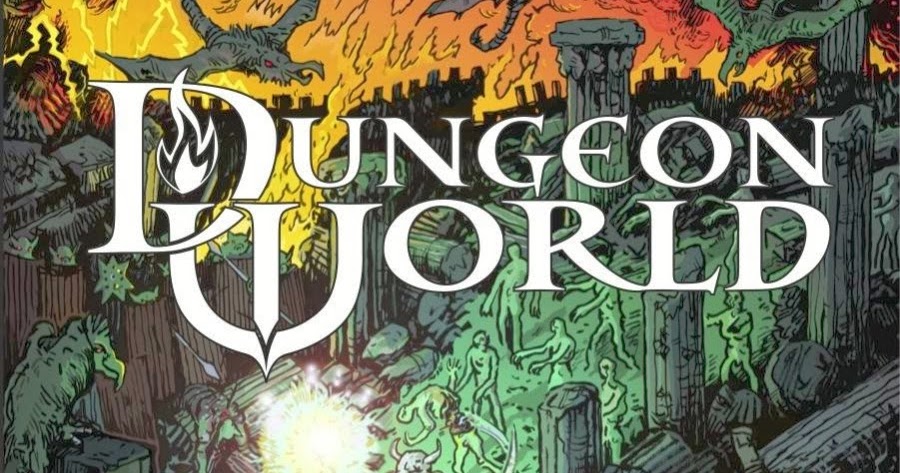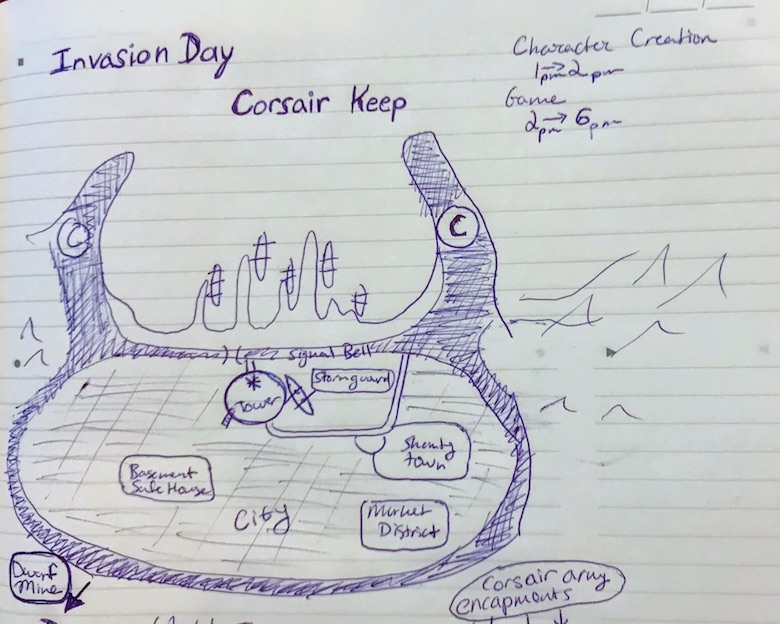
Dungeon World Impressions
Dungeon World has rules that read like a hidden manifesto for narrative gaming.
Theory and Regrets
There is a game design unified theory out there called GNS which tries to explain how most games have characteristics that align them towards either Gamism, Narrativism, or Simulationism. Categorizing the things we love is a fun meta-hobby to throw on top of any hobby. Lately, I’ve come to realize that the fun I have gaming with others, especially with tabletop roleplaying games, is hugely influenced by whether or not the participants have the same expectation of playstyle as was intended by the rules of the game. One of two things are happening that stop the fun at the table:
- as GM, when my players are passive, keeping their headcanon on the game to themselves or barely interacting with the world around them.
- as GM, my players are disappointed in the level of choices they have in character creation and combat and the level to which that impacts the outcome of the game we are playing.
At this point in my time as a GM, this mismatched expectation is probably due to a decade of me not understanding or adapting to the above problem. I have been playing in systems built for crunch and tactical combat (3rd and 4th ed D&D) and prepping rich background worlds to compensate for the game’s lack of tools to make that world interesting. The impact is that when I switch gears to other systems that don’t require a story on rails to the same degree that 3rd and 4th did, I am still bringing a story that has an almost predetermined path. The story may not be linear, but I can predict the ending to 99% of the Cthulhu games I’ve run, and that feels wrong.
Enter Dungeon World and the Long Tail
Dungeon World was written in 2012 by Adam Koebel and Sage LaTorra, who were both adapting a Dungeons & Dragons-like experience to the “Powered by the Apocalypse” engine. The writer of Apocalypse World did the RPG equivalent of open sourcing their engine, allowing a cottage industry of descendent games to pop up across a wide range of genres. Rather than just inject some PbtA concepts into their D&D they found that a full rewrite was necessary. Koebel describes his thoughts on game design in his commentary on Burning wheel. Summarized briefly, a game should know and present the following:
- what the game is about
- how the game is about that above thing
- and what reward structure exists to encourage player behavior towards that design goal.
Said in another way, the rules of a game should be written to incentivize player behaviors that leads to what that game is about.
To those of us who have played larger market RPGs like D&D, that may seem narrow and inflexible. Why should a game’s rules constrain its playstyle? We exist in the era of the Chris Anderson’s Long Tail, where the market is moving away from depending on only a few strong “hits” that attract the majority of interest but rather a market where consumers will seek out the niche products that fit their more narrowly defined interests. The enabler: virtually connected communities of the internet can connect those interests such that they can survive. Dungeon World would have never survived in the gaming market of 1996 back when there could only be a handful of well-funded front-runners. In the world where the writer of a small press RPG can live off of Twitch and the associated revenue from their web brand, the gaming market equation is fundamentally different.

Check out the Long Tail. It summarizes an underappreciated part what's happening with community and engagement driven media. Source: http://www.thelongtail.com/about.html
How is this game Different?
The best way to explain the unique qualities of Dungeon World is to compare it to the system for which it stands as a narrative-ist alternative, namely Dungeons & Dragons.
For the players the biggest difference is the game is not a turn-based simulation of combat but rather a story-telling system where you describe what you are doing in relation to the fiction. The rules will chime in too, but there is no initiative. There are no turns or rounds. No rules to say whose turn it is to talk.
- the GM describes the world around you
- Players say what their characters are thinking, feeling, and doing. Sometimes those descriptions trigger a move.
- Moves call for you to roll to see what happens, at which GM will describe how the situation changes and then ask the question, “what do you do next?”
Moves a finite list, mostly aligned with the 6 main stats, testing a roll of 2d6 + stat mod in order to learn a result. Outcomes mostly work like this:
- on a 1 through 6 you fail, and suffer the consequences but gain XP
- On a 7 through 9 you succeed but with a complication or cost
- On a 10+ succeed with little trouble
This means that instead of trading blows back and forth and positioning on a grid for advantages, players are narrating a combat which contains anything that makes sense and then the GM calls for a roles like “hack and slash”, a burst of melee combat. The outcomes deal damage in both directions, yes, but the outcome also alters the narrative causing the player to think of a creative next move or risk a GM “hard move”, effectively a free potentially deadly outcome to the player. As complications stack and are countered by crafty players, characters use their wits, brawn, and fantastic powers to survive combat.
For the GM the biggest difference is that Dungeon World both requires (and has the capability to survive) unscripted improvisational world creation during play from both the GM and the players. The game explicitly mandates a system of goals, principles, GM moves, and even a pre-game prep system called Fronts. Fronts are threats in the world that will play into the story. The system focuses prep not on the statistics and balance, but rather on opportunities for drama, fantasy, and high adventure. Having only played a one-shot of Dungeon World, I have not yet gotten a chance to test the Front system yet but I’m interested to see whether they do for a campaign of Dungeon World what the in-play mechanics do so well for a single session.

Dungeon World encourages you to draw maps with gaps, filling in table-improvised details as the story unfolds.
In my experience, Dungeons & Dragons required lots of preparation to entertain the Gamism (crunchy rules) gamer. If the players expect game balance, continuity of rules, and interesting tactical play on the part of the monsters, a GM needs to spend time picking, balancing, and studying the pre-planned encounters of an adventure. Without this prep, D&D games risk total party kills (TPKs), unbalanced encounters whose overall outcome is too easily predetermined failure or success. D&D adventures often have to have fixed set-pieces for the adventurers to discover in their explorations which can make a game feel like it is “on rails”. This doesn’t mean the GMs or players can’t be creative within D&D. The rules just don’t do much to incentivize it.
In Summary
Dungeon World is a great gateway game to different ideas about narrative game design. Because of both its similarities and manifesto-appropriate differences to Dungeons & Dragons, it will cut straight to the point and help players and GMs discover what kind of games they’d like to play during their gaming sessions.
As a side note, there is a whole wave of more recent “D&D but with more modern rules” out there to explore such as Blades in the Dark and Torchbearer that I am now interested to read. I might start with Apocalypse World though, to see if that can be adapted for some creative Call of Cthulhu play.